Honda Accord Vs Mazda6: Which Sedan is Right for You?

Do you want a mainstream mid-size sedan, but one with a hint of driving fun? The Honda Accord and Mazda6 are two of the best choices for your needs.
The Honda Accord has long struck the balance between a worry-free daily ride and the occasional back-road fun. The latest generation, first debuting in 2018 and seeing a refresh for 2021, continues the tradition, with smooth suspension tuning and powerful, turbocharged engines.
Mazda has been on an aspirational move upmarket the last few years, and it arguably started with the Mazda6. A comfy, high-end interior is one thing, but the Zoom-Zoom spirit is alive and well in this mid-size four-door too, thanks to a torquey, turbocharged engine. Sadly though, the Mazda6’s days are over and you’d better hurry if you hope to still find a new example for sale.
Get a Quote on a New Honda Accord or Mazda6Read on for the full breakdown between these two sedans.
Powertrain
Accord: Honda offers the Accord with three different engine options. Most trims feature the 1.5-liter turbocharged engine found in the CR-V and Civic. Here it produces a solid 192 horsepower and 192 lb-ft of torque. The only transmission option is a continuously-variable transmission (CVT), sending power to the front wheels. Moving up the ladder, the larger 2.0-liter turbo four-pot is optional on the Sport trim, and standard on the Touring. This engine, a detuned example of the one found in the Civic Type R, belts out 252 horsepower and 273 lb-ft of torque. Power once again flows through the front wheels, this time through a 10-speed automatic. Older models offered a six-speed manual, but a 2021 facelift discontinued the three-pedal option.
SEE ALSO: Toyota Camry AWD vs Kia K5 AWD ComparisonA hybrid model is also available. This uses a naturally-aspirated 2.0-liter four-pot hooked up to a permanent-magnet electric motor. Combined output splits the difference between the two gas-powered Accords: the Hybrid boasts 212 horsepower and 232 lb-ft of torque. An electronically controlled CVT is standard.
Mazda6: The Mazda offers buyers two 2.5-liter engines; one turbocharged, one not. The naturally-aspirated mill pushes out 187 hp and 186 lb-ft of torque, just a few points shy of the Honda’s smaller turbo engine. Higher trims open up access to Mazda’s torque-tastic turbo four-pot. This muscular engine produces up to 250 horsepower—just 2 shy of the Accord—but a stump-pulling 320 lb-ft of twist. And as the saying goes: people buy horsepower, but they drive torque. No matter whether there’s a snail attached to the engine or not, the 6 uses a six-speed automatic transmission for shifting duties.
There is no hybrid option for the Mazda6, unfortunately.
Bottom Line: It’s important to note that both manufacturers state their sedans will happily sip 87-octane fuel. Fill the Mazda with the low-grade swill, though, and it will run 227 hp and 310 lb-ft of torque.
Both of these machines are evenly matched, at least in pure internal combustion engine (ICE) terms. The Mazda’s naturally-aspirated base engine is sweeter, and its top engine is torquier. The Accord counters with the availability of the Hybrid model, however. Due to that, it gets the nod here.
Fuel Economy
Accord: The most frugal gas-powered Accord is the LX, with EPA estimates of 30 mpg city, 38 mpg highway, and a combined 33 mpg rating. The up-level EX-L matches this, while the Sport’s more aggressive styling bumps things down to 29/35/32, respectively. Opting for the power of the 2.0T nets scores of 22 and 32 mpg city and highway, with an average of 26 mpg.
Switching to the Hybrid keeps things very easy to remember: the Accord Hybrid posts 48 mpg in the city and 47 mpg on the highway. This applies to every trim except the top-shelf Touring, which drops to 44/41/43 mpg, respectively.
Mazda6: With the base engine, the Mazda6 falls behind the Accord. The nat-asp base engine kicks out 26 mpg in the city, and 35 mpg on the highway, resulting in a 29 mpg average. The turbo unit fairs better: it one-ups the Accord’s city rating (23 mpg), but gives away 1 mpg on the highway, netting the same 26 mpg average.
Bottom Line: It’s a pretty straightforward, numbers-based win for the Accord here. That’s before we factor in the Hybrid, too.
Technology and Features
Accord: Thanks to a facelift in 2021, the Accord now features Apple CarPlay and Android Auto integration as standard across all trims. Higher trims even go wireless. A decently-sized 8.0-inch touchscreen is also part of the package regardless of which model you pick. You’ll find up to 4 USB ports dotting the Accord’s cabin, too.
Heated front seats show up from the Sport trim onward, with the Touring adding ventilation up front, and heating for outboard second-row passengers. Leather seating begins to show up with the Sport Special Edition. Trim-dependant features include active shutter grilles, 12-way power-adjustable driver’s seat with memory, a wireless charger, 10-speaker stereo, native navigation, WiFi hotspot, and a head-up display.
SEE ALSO: Toyota Camry vs Honda Accord: Which Sedan is Right For You?The Honda Sensing suite of driver assists is standard on the Accord lineup. This includes the usual goodies, such as automated emergency braking, lane-keep assist, lane departure warning, traffic sign recognition, auto high beams, and the required backup camera (with dynamic guidelines). Every Accord gets LED lighting, too. Higher trims bolster all of this with blind-spot monitoring and parking-speed auto braking.
Mazda6: Mazda’s been moving away from touchscreens for a few years now, but the 6 retains one. Well, sort of. It works as a touchscreen in park, but once you’re on the move, you’ll need to use the rotary dial in the center console. That can be a pain for the uninitiated, though at least Apple CarPlay and Android Auto are standard. The former even goes wireless on higher trims. Rear seat guests get a pair of USB ports on the Touring trim and above.
Like the Honda, the Mazda drops in heated seats on every trim except the base. Splurge on a Grand Touring Reserve or Signature and you’ll find ventilated front and heated rear thrones, too. Artificial leather adorns the Touring’s seats, with leather on higher trims—including the Nappa variety on the Signature. Higher trims also include adaptive front lighting, frameless auto-dimming rearview mirror, Ultrasuede and wood interior trim, an 11-speaker Bose audio system, standard navigation, and a windshield-projected HUD.
SEE ALSO: Mazda3 vs Mazda6 ComparisonThe Mazda6’s standard lineup of safety assists also includes automated emergency braking with pedestrian detection, lane departure warning, lane-keep assist, adaptive cruise control with stop and go, auto high-beams, and hill start assist. Also standard is blind-spot monitoring with rear-cross traffic alert, a win over the Accord. The top Signature trim adds a 360-degree camera, parking sensors front and rear, low-speed parking brake assist, and a driver attention alert warning.
Bottom Line: Despite it’s age, the Mazda6 doesn’t let the Accord run away in this category. Both pile on the features, especially on the higher trims, with lots of standard safety kit and creature comforts. The Mazda has the edge in the mid-level trims however, specifically with its available safety features.
On the flip side, neither of these cars has particularly great infotainment, but the Honda’s is less bad. Call it a draw.
Interior and Cargo Space
Accord: The Honda comes in at 192.2 inches nose to tail, with 111.4 inches between the axles. Headroom is 39.5 inches up front and 37.3 inches in the rear. Spec the moonroof, however, and say goodbye to a full 2.0 inches up front, but just 0.1 in the back. Legroom is a practically palatial 42.3 and 40.4 inches, respectively. Trunk space is a useful 16.7 cubic feet, with fold-down seats standard (60/40 split on Sport trims and higher).
Mazda6: You’ll find the same 111.4-inch wheelbase measure on the Mazda6, but an extra half-inch of total exterior length. It’s roughly an inch narrower than the Accord, as well. Without the moonroof, the Mazda6 has slightly less headroom than the Honda, measuring 38.4 in front and 37.1 inches in back. Opting for the glass brings it just 0.1 inches shy of the Accord in both rows (37.4 and 37.1 inches).
Legroom is the same story up front in the 6, though second-row space is 38.7 inches. The narrower body means hip and shoulder room is at a premium in the Mazda too. Lastly, the trunk is also smaller, at 14.7 cubic feet.
SEE ALSO: 2021 Mazda CX-30 Turbo Review: First DriveBottom Line: No matter which way you point the tape measure, the Honda comes out on top.
Styling
Accord: Time—and a facelift for 2021—has been kind to the Accord’s looks. The big shield grille and coupe-like roofline give it a premium look, while higher trims fill out the corners with large, attractive wheels. It’s clean and handsome.
Mazda6: …but not as handsome as the Mazda6. The car from Hiroshima has had two facelifts now, as it closes in on a decade of production, but still remains a classy-looking four-door. The added length of the of 6 lets Mazda’s Kodo design language breathe. It’s sporty, no doubt, but it’s also elegant—a rarity in the class.
Bottom Line: Looks are always subjective, but we ever so slightly prefer the prettier Mazda.
Pricing
Accord: The Accord starts at $27,615 for the base LX trim, destination included. From there the trim lineup runs to Sport ($30,075), EX-L ($32,285) and Touring 2.0T ($39,545). It’s important to note the 2.0T engine is optional on the Sport, adding $4,530 to the bottom line. Honda keeps things simple, with no extra factory option costs beyond premium paint ($395).
SEE ALSO: 2019 Nissan Altima vs Honda Accord ComparisonSwitching over to the hybrid sees a base price of $27,565. The mid-trim EX and EX-L go for $31,515 and $33,885, respectively. Go for the loaded Hybrid Touring and it rings in a few hundo short of the turbo, at $37,435.
Mazda6: Kicking off the Mazda6 line is the Sport trim, with a going rate of $25,470, destination included. The Touring brings in more goodies for $28,070, while the Grand Touring adds the turbocharged engine, starting at $31,170. At the very top of the pile is the Nappa leather-lined Signature trim, which runs to $36,895.
Options on most trims are limited to exterior and interior colors, navigation, rear parking sensors, and a lip spoiler.
Bottom Line: Both of these lineups are refreshingly straight-forward. They’re also not too far apart, price wise. The Mazda has the lower list price though, so it inches ahead here.
Verdict
Just like we said at the top, these are two closely-matched four-doors. Neither one has a particular weak point, unless we count the absence of a hybrid in the Mazda lineup. These are two well-equipped, fun-to-drive mainstream sedans, mixing in the sort of comfort we would have expected of luxury cars only a decade ago. Neither will break the bank either.
Our pick goes to the Honda Accord, though. It only lags behind the Mazda on price, but is able to put its bluff nose ahead in more ways, such as fuel efficiency, ease of use, and space. Neither is a bad choice—the Accord is just better.
Become an AutoGuide insider. Get the latest from the automotive world first by subscribing to our newsletter here.

Kyle began his automotive obsession before he even started school, courtesy of a remote control Porsche and various LEGO sets. He later studied advertising and graphic design at Humber College, which led him to writing about cars (both real and digital). He is now a proud member of the Automobile Journalists Association of Canada (AJAC), where he was the Journalist of the Year runner-up for 2021.
More by Kyle Patrick



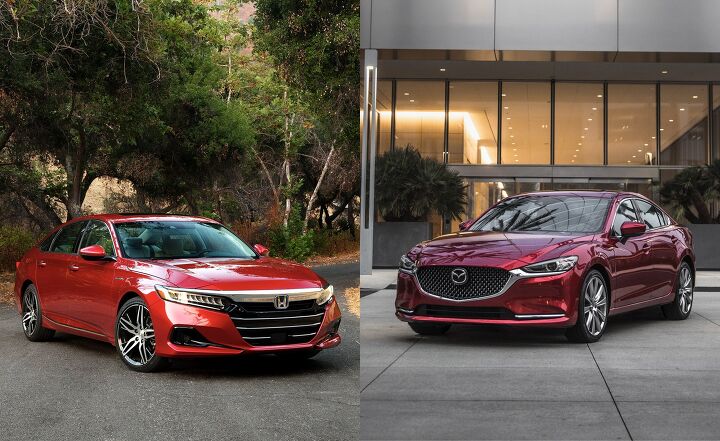

![ProEXR File Description
=Attributes=
cameraAperture (float): 36
cameraFNumber (float): 8
cameraFarClip (float): 10000
cameraFarRange (float): 1e+018
cameraFocalLength (float): 76.8028
cameraFov (float): 26.1649
cameraNearClip (float): 500
cameraNearRange (float): 0
cameraProjection (int): 0
cameraTargetDistance (float): 907.999
cameraTransform (m44f): [{0.631084, -0.774525, -0.0429401, -468.075}, {-0.77556, -0.628888, -0.0548266, -602.869}, {0.01546, 0.0679028, -0.997572, 139.346}, {0, 0, 0, 1}]
channels (chlist)
compression (compression): Zip
dataWindow (box2i): [0, 0, 2979, 2107]
displayWindow (box2i): [0, 0, 2979, 2107]
lineOrder (lineOrder): Increasing Y
name (string): ""
pixelAspectRatio (float): 1
screenWindowCenter (v2f): [0, 0]
screenWindowWidth (float): 1
type (string): "scanlineimage"
vrayInfo/camera (string): "cam_FQ_new3"
vrayInfo/computername (string): "slanted-p0001"
vrayInfo/cpu (string): "INTEL/Model:13,Family:6,Stepping:7,Cache:0"
vrayInfo/date (string): "2017/Sep/22"
vrayInfo/filename (string): "Z:/PROJECT/2017_08_MAZDA_J71E_IPM/99_MayaProject/scenes/_inakoshi/ext_anglehunt_v22_FQ_SDN_Lighting.mb"
vrayInfo/frame (string): "00001"
vrayInfo/h (string): "2108"
vrayInfo/mhz (string): "0MHz"
vrayInfo/os (string): "Microsoft(tm) Windows(tm), version 6.1, Service Pack 1"
vrayInfo/primitives (string): "0"
vrayInfo/ram (string): "24560MB"
vrayInfo/renderlayer (string): "defaultRenderLayer"
vrayInfo/rendertime (string): " 0h 0m 0.0s"
vrayInfo/scenename (string): "ext_anglehunt_v22_FQ_SDN_Lighting"
vrayInfo/time (string): "02:15:48"
vrayInfo/vmem (string): "8388608MB"
vrayInfo/vraycore (string): "3.52.02"
vrayInfo/vrayversion (string): "Version of V-Ray for Maya 3.52.02"
vrayInfo/w (string): "2980"
=Channels=
A (half)
B (half)
E_MID1.B (half)
E_MID1.G (half)
E_MID1.R (half)
E_MID2.B (half)
E_MID2.G (half)
E_MID2.R (half)
E_MID3.B (half)
E_MID3.G (half)
E_MID3.R (half)
E_MID4.B (half)
E_MID4.G (half)
E_MID4.R (half)
E_MID5.B (half)
E_MID5.G (half)
E_MID5.R (half)
E_MID6.B (half)
E_MID6.G (half)
E_MID6.R (half)
E_OID.B (half)
E_OID.G (half)
E_OID.R (half)
G (half)
GI.B (half)
GI.G (half)
GI.R (half)
I_MID1.B (half)
I_MID1.G (half)
I_MID1.R (half)
I_MID2.B (half)
I_MID2.G (half)
I_MID2.R (half)
I_MID3.B (half)
I_MID3.G (half)
I_MID3.R (half)
I_MID4.B (half)
I_MID4.G (half)
I_MID4.R (half)
I_MID5.B (half)
I_MID5.G (half)
I_MID5.R (half)
I_MID6.B (half)
I_MID6.G (half)
I_MID6.R (half)
R (half)
Z (half)
diffuse.B (half)
diffuse.G (half)
diffuse.R (half)
lighting.B (half)
lighting.G (half)
lighting.R (half)
multimatte.B (half)
multimatte.G (half)
multimatte.R (half)
normals.X (half)
normals.Y (half)
normals.Z (half)
reflect.B (half)
reflect.G (half)
reflect.R (half)
refract.B (half)
refract.G (half)
refract.R (half)
shadow.B (half)
shadow.G (half)
shadow.R (half)
specular.B (half)
specular.G (half)
specular.R (half)](https://cdn-fastly.autoguide.com/media/2023/06/26/12798292/honda-accord-vs-mazda6-which-sedan-is-right-for-you.jpg?size=720x845&nocrop=1)



![ProEXR File Description
=Attributes=
cameraAperture (float): 36
cameraFNumber (float): 8
cameraFarClip (float): 1e+030
cameraFarRange (float): 1e+018
cameraFocalLength (float): 24.1707
cameraFov (float): 72.8221
cameraNearClip (float): 0
cameraNearRange (float): 0
cameraProjection (int): 0
cameraTargetDistance (float): 251.983
cameraTransform (m44f): [{-0.979435, -0.19315, -0.0583155, 309.811}, {-0.201762, 0.937632, 0.283088, 186.537}, {-1.38778e-017, 0.289032, -0.957319, 135.672}, {0, 0, 0, 1}]
channels (chlist)
compression (compression): Zip
dataWindow (box2i): [0, 0, 2979, 2107]
displayWindow (box2i): [0, 0, 2979, 2107]
lineOrder (lineOrder): Increasing Y
name (string): ""
pixelAspectRatio (float): 1
screenWindowCenter (v2f): [0, 0]
screenWindowWidth (float): 1
type (string): "scanlineimage"
vrayInfo/camera (string): "cam_c11_normal_v3"
vrayInfo/computername (string): "nakayama_rental"
vrayInfo/cpu (string): "INTEL/Model:15,Family:6,Stepping:2,Cache:0"
vrayInfo/date (string): "2017/Sep/19"
vrayInfo/filename (string): "Z:/PROJECT/2017_08_MAZDA_J71E_IPM/99_MayaProject/scenes/c11/J71E_IPM3_c11_v02.mb"
vrayInfo/frame (string): "00001"
vrayInfo/h (string): "2108"
vrayInfo/mhz (string): "0MHz"
vrayInfo/os (string): "Microsoft(tm) Windows(tm), version 6.1, Service Pack 1"
vrayInfo/primitives (string): "0"
vrayInfo/ram (string): "65472MB"
vrayInfo/renderlayer (string): "defaultRenderLayer"
vrayInfo/rendertime (string): " 0h 0m 0.0s"
vrayInfo/scenename (string): "J71E_IPM3_c11_v02"
vrayInfo/time (string): "15:16:44"
vrayInfo/vmem (string): "8388608MB"
vrayInfo/vraycore (string): "3.52.02"
vrayInfo/vrayversion (string): "Version of V-Ray for Maya 3.52.02"
vrayInfo/w (string): "2980"
=Channels=
A (half)
B (half)
E_MID1.B (half)
E_MID1.G (half)
E_MID1.R (half)
E_MID2.B (half)
E_MID2.G (half)
E_MID2.R (half)
E_MID3.B (half)
E_MID3.G (half)
E_MID3.R (half)
E_MID4.B (half)
E_MID4.G (half)
E_MID4.R (half)
E_MID5.B (half)
E_MID5.G (half)
E_MID5.R (half)
E_MID6.B (half)
E_MID6.G (half)
E_MID6.R (half)
E_OID.B (half)
E_OID.G (half)
E_OID.R (half)
G (half)
GI.B (half)
GI.G (half)
GI.R (half)
I_MID1.B (half)
I_MID1.G (half)
I_MID1.R (half)
I_MID2.B (half)
I_MID2.G (half)
I_MID2.R (half)
I_MID3.B (half)
I_MID3.G (half)
I_MID3.R (half)
I_MID4.B (half)
I_MID4.G (half)
I_MID4.R (half)
I_MID5.B (half)
I_MID5.G (half)
I_MID5.R (half)
I_MID6.B (half)
I_MID6.G (half)
I_MID6.R (half)
R (half)
Z (half)
diffuse.B (half)
diffuse.G (half)
diffuse.R (half)
lighting.B (half)
lighting.G (half)
lighting.R (half)
normals.X (half)
normals.Y (half)
normals.Z (half)
reflect.B (half)
reflect.G (half)
reflect.R (half)
refract.B (half)
refract.G (half)
refract.R (half)
shadow.B (half)
shadow.G (half)
shadow.R (half)
specular.B (half)
specular.G (half)
specular.R (half)](https://cdn-fastly.autoguide.com/media/2023/06/26/12798304/honda-accord-vs-mazda6-which-sedan-is-right-for-you.jpg?size=720x845&nocrop=1)



![ProEXR File Description
=Attributes=
cameraAperture (float): 36
cameraFNumber (float): 8
cameraFarClip (float): 10000
cameraFarRange (float): 1e+018
cameraFocalLength (float): 76.8028
cameraFov (float): 26.1649
cameraNearClip (float): 500
cameraNearRange (float): 0
cameraProjection (int): 0
cameraTargetDistance (float): 907.999
cameraTransform (m44f): [{0.631084, -0.774525, -0.0429401, -468.075}, {-0.77556, -0.628888, -0.0548266, -602.869}, {0.01546, 0.0679028, -0.997572, 139.346}, {0, 0, 0, 1}]
channels (chlist)
compression (compression): Zip
dataWindow (box2i): [0, 0, 2979, 2107]
displayWindow (box2i): [0, 0, 2979, 2107]
lineOrder (lineOrder): Increasing Y
name (string): ""
pixelAspectRatio (float): 1
screenWindowCenter (v2f): [0, 0]
screenWindowWidth (float): 1
type (string): "scanlineimage"
vrayInfo/camera (string): "cam_FQ_new3"
vrayInfo/computername (string): "slanted-p0001"
vrayInfo/cpu (string): "INTEL/Model:13,Family:6,Stepping:7,Cache:0"
vrayInfo/date (string): "2017/Sep/22"
vrayInfo/filename (string): "Z:/PROJECT/2017_08_MAZDA_J71E_IPM/99_MayaProject/scenes/_inakoshi/ext_anglehunt_v22_FQ_SDN_Lighting.mb"
vrayInfo/frame (string): "00001"
vrayInfo/h (string): "2108"
vrayInfo/mhz (string): "0MHz"
vrayInfo/os (string): "Microsoft(tm) Windows(tm), version 6.1, Service Pack 1"
vrayInfo/primitives (string): "0"
vrayInfo/ram (string): "24560MB"
vrayInfo/renderlayer (string): "defaultRenderLayer"
vrayInfo/rendertime (string): " 0h 0m 0.0s"
vrayInfo/scenename (string): "ext_anglehunt_v22_FQ_SDN_Lighting"
vrayInfo/time (string): "02:15:48"
vrayInfo/vmem (string): "8388608MB"
vrayInfo/vraycore (string): "3.52.02"
vrayInfo/vrayversion (string): "Version of V-Ray for Maya 3.52.02"
vrayInfo/w (string): "2980"
=Channels=
A (half)
B (half)
E_MID1.B (half)
E_MID1.G (half)
E_MID1.R (half)
E_MID2.B (half)
E_MID2.G (half)
E_MID2.R (half)
E_MID3.B (half)
E_MID3.G (half)
E_MID3.R (half)
E_MID4.B (half)
E_MID4.G (half)
E_MID4.R (half)
E_MID5.B (half)
E_MID5.G (half)
E_MID5.R (half)
E_MID6.B (half)
E_MID6.G (half)
E_MID6.R (half)
E_OID.B (half)
E_OID.G (half)
E_OID.R (half)
G (half)
GI.B (half)
GI.G (half)
GI.R (half)
I_MID1.B (half)
I_MID1.G (half)
I_MID1.R (half)
I_MID2.B (half)
I_MID2.G (half)
I_MID2.R (half)
I_MID3.B (half)
I_MID3.G (half)
I_MID3.R (half)
I_MID4.B (half)
I_MID4.G (half)
I_MID4.R (half)
I_MID5.B (half)
I_MID5.G (half)
I_MID5.R (half)
I_MID6.B (half)
I_MID6.G (half)
I_MID6.R (half)
R (half)
Z (half)
diffuse.B (half)
diffuse.G (half)
diffuse.R (half)
lighting.B (half)
lighting.G (half)
lighting.R (half)
multimatte.B (half)
multimatte.G (half)
multimatte.R (half)
normals.X (half)
normals.Y (half)
normals.Z (half)
reflect.B (half)
reflect.G (half)
reflect.R (half)
refract.B (half)
refract.G (half)
refract.R (half)
shadow.B (half)
shadow.G (half)
shadow.R (half)
specular.B (half)
specular.G (half)
specular.R (half)](https://cdn-fastly.autoguide.com/media/2023/06/26/12798316/honda-accord-vs-mazda6-which-sedan-is-right-for-you.jpg?size=720x845&nocrop=1)


















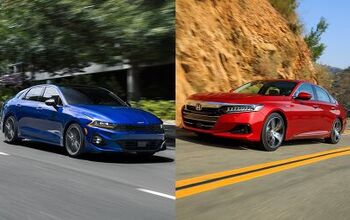
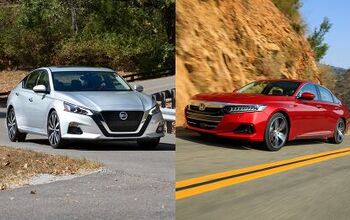
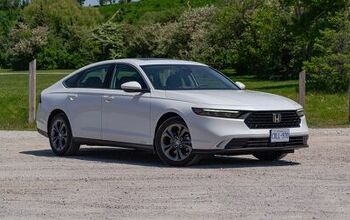
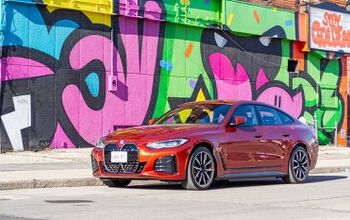



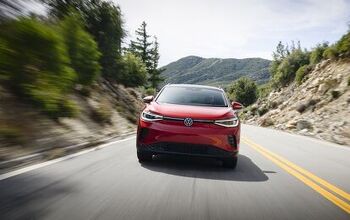

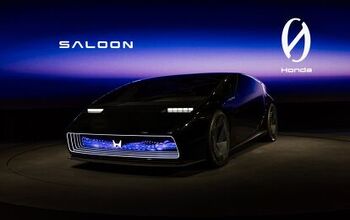
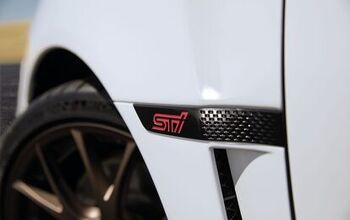
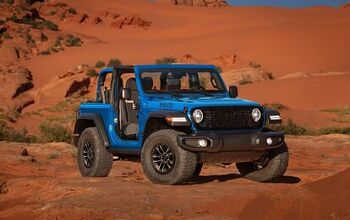
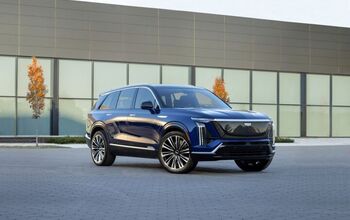
Comments
Join the conversation